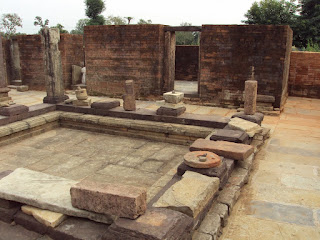 |
| Sangye Menla or Buddha of Medicine |
Perhaps no other religion put so much
emphasis on providing medical care as Buddhism did. Buddha himself nursed
individuals on the deathbed or suffering from serious diseases and instructed
all his disciples to always provide medical help and care to every individual
even if they do not know the sufferer personally. Four noble truths (there is
sorrow, there is reason for it, there is cessation of sorrow, and there are
paths leading to the cessation of sorrow) of Buddhism have appeared to many as
fundamental principles of a medical system. In fact, Buddhist monks were part
of wandering ascetics with deep knowledge of herbs and other natural medicines.
Traders–the most important class of patrons for the early Buddhists–were also
frequent travellers and as such they must have also added to the wealth of
medical knowledge at monasteries. Long-distance exchange of medicinal plants
and herbs had always been a lucrative trade as well.
Recent research suggests that Ayurveda
developed in Buddhist monasteries. Not only Buddha himself placed great
significance on it, but medicine was made part of Vinaya Pitaka or Monastic
Rules early on. Contrary to popular belief, it has now been clearly established
that the Vedic system of healing was magico-religious (1700-800 BCE) and there
was no serious link between Atharvaveda and later day empirico-rational
traditions of Ayurveda (developed between 800 BCE and 100 CE). This knowledge
of Ayurveda came from close observation of wandering monks and their knowledge
of plants, herbs, roots, etc. gathered in the course of their wandering
careers. This was systematically developed in monasteries.
Though initially this knowledge was
utilised only to treat monks but from the third century BCE onward, it was
extended to lay disciples as well. There was mention of a separate hall for
sick near a forest in Vaishali. Faxian saw hospitals funded by rich citizens of
Pataliputra and run by Buddhist monks. One such centre might have been the
place next to Kumrahar in Patna, where seals containing the name of Sri Arogya
Vihara Bhikshusanghasya, have been unearthed. Similarly, a separate structure
resembling a hospital has been found at Nagarjunikonda. Various objects
commonly associated with the preparation of Ayurvedic medicine have been found
from almost all the Buddhist monasteries including those at Sarnath and Sirpur.
 |
| Padmapani Vihar Sirpur, utensils for preparing medicine |
Buddhism was perhaps the single
biggest factor in crystallisation of early medical knowledge in India.
Integration of medical doctrines in monastic traditions and emergence of
monk-healers immensely helped in the spread of Buddhism. It also led to the inclusion
of medical sciences in the curriculum of monasteries and then eventually in
large Buddhist universities such as Nalanda. Realising the importance of
medicine, Hindu traditions assimilated this knowledge in the form of Charak (in
fact, there are strong reasons to believe that the Charak Samhita was the work
of a school of wandering doctors as the name itself is likely to have come from
‘char’ or to wander) and Sushrut Samhitas. Hindu temples also started having
hospices and infirmaries from the tenth century onward–various inscriptions
found in Bengal, Andhra, Tamil Nadu mention establishment of arogyashala,
prasutishala (hall for pregnant women) and employment of doctors, surgeons,
nurses, etc. An inscription dated 1493 CE from the famous Srirangam temple in
Tamil Nadu mentions restoration of an arogyashala there, which was originally
set up in either the eleventh or twelfth century.
Knowledge of Ayurveda travelled with
Buddhism to Sri Lanka, Burma, and Southeast Asia, where for centuries and even
now Buddhist monks have been providing medical care to local communities. It
did not find much acceptance there, but even in China (Yaoshifo) and Japan
(Yakushi), the concept of Bhaisajyaguru or the Buddha of healing and medicine
was well known. In Tibetan Buddhism (and by extension in Ladakh, Nepal, Bhutan,
and other areas, which follow the Tibetan traditions), medicine has always been
accorded supreme importance. Sangye Menla or medical Buddha is a common form of
worship in Tibetan Buddhism. A number of Sanskrit medical classics were
translated in Tibetan by tenth and eleventh centuries and the basic principles
of Ayurveda are well preserved in the present tradition of Tibetan medicine or
Sowa Rigpa (also accepted officially in India as one of the traditional medical
systems along with Ayurveda, Unani, etc).
For more such stories related to Indian
business history, see Laxminama: Monks, Merchants, Money and Mantra by Anshuman
Tiwari and Anindya Sengupta Bloomsbury 2018

No comments:
Post a Comment